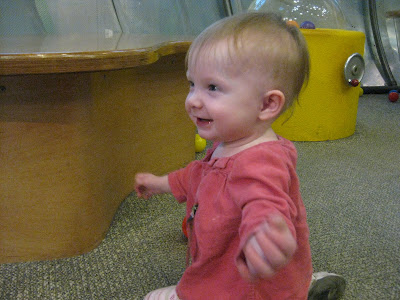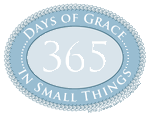CP Awareness Day: who knew? As I often do, I logged on to read the blogs I enjoy and see what's new, some of which are simply interesting snapshots of people's lives, and some of which are blogs specifically focused on parenting kids with a variety of disabilities, including cerebral palsy. Otherwise I wouldn't know today was special.
You never see it coming. I was aware that my first daughter's early birth and more particularly her low weight put her at risk for a variety of health issues but it seemed we had dodged that bullet. I was convinced if I had pre-natal care that focused on catching the failing placenta at the earliest moment, we would be out of the woods. My pregnancy went full term, with no placental poop out and just some low fluid readings or slightly high BP readings but my high risk doc let me go to the due date. Hannah's APGAR scores were good, she seemed the picture of health and was, I thought, on her way to becoming a good nurser. I didn't see MCADD coming. The nurses said her temp was low, too low to warm on me, and they took her to the nursery, which I was very familiar with, having had Claire spend a month there. They charted that she presented with signs of hypoglycemia and they started antibiotics, tried to give formula and monitored her blood sugar twice more, then started the glucose IV almost two hours after they noticed the low temp. I think an earlier intervention would have prevented the apparent brain injury that caused her hemiplegic cerebral palsy. At five months of age I began to feel some concern for her fisted hand, and I googled my way through pages of milestones and diagnoses and I suspected CP. Her doctor was not keyed up but I was, and then when she didn't sit on her own according to milestone charts he backed off his stance of wait to see what happened and referred me to his favorite private provider of physical therapy,
Michael J. Workman, PT extraordinaire. He diagnosed hemiplegic CP without hesitation and we got right to work on a therapy schedule to get Hannah to sit independently. We now see him through Early Intervention at reduced costs, we get services for free at Shriners because we happen to live about a mile away from one of their centers, and we see the specialty clinic that manages her metabolic disorder concerns at the intermountain west's premier children's hospital. All told, she now sees a pediatrician, a genetic metabolic specialist, an orthopedic surgeon and a neurologist twice a year, and we have regular visits with two PTs and two OTs since we use both Early Intervention and Shriners therapy and orthotics services. And I have health insurance.
A lot of the bloggers who posted on this topic have talked about what they were told their kids would never do, and how they proved naysayers wrong. My doctors never told us that stuff, thankfully. Honestly, I didn't ask. My key person has been a PT, the first we worked with and whom I adore, who has always couched his predictions as what she can do and when she can do it and although I work with many others, all their advice is secondary. Reflecting on this, I should perhaps work on a thank you gift for Mike, because people, let me tell you, this man is gifted when it comes to my daughter. He is upbeat and positive and excited about my daughter's future. Let that be a lesson to any therapists who see this post, the tone of the visits with this person is enormously powerful, and the talent he brings to ideas for what helps Hannah is exactly what my family needed. He has a new and not yet accepted idea for elbow bracing that I believe is why Hannah can now crawl, and that skill will impact her weight shifting abilities for years to come. Years.
A lifetime. I think Mike feeds me little bits of possible negative outcomes here and there, when he thinks I can handle a little more knowledge, like when he mentioned labile personality traits (as if!) or that although her muscles are loose now, she could tighten with a growth spurt and it will seem as though we have made no progress (as if!!) or that being smart means Hannah is harder to work with because she is wily (hello my life when I have two teen aged girls!). But he never says what she can't do, he only tells me what she can.
I probably could have identified
Easter Seals as the major campaign for fund raising for kids with movement problems other than muscular dystrophy but I'd never heard of the
Children's Hemiplegia & Stroke Association. I don't know what color our ribbon is or if we even have one. Before a year ago this month I thought of CP as something that left you in metal braces, on crutches, in wheelchairs, or in care facilities. I didn't know about how people function with it, and live and
live well. I only recently learned that Hannah might have a lot of pain as an adult if she pushes herself like
Erin does. Somehow I bet there are a few more obstacles in the path before us than I have seen so far but I am trying not to go looking for them. I love to see blogs about families who are doing what we must do, and that is pretty much all the research I allow myself right now. The people are inspiring but the raw fact of the medical situation is daunting. I have no idea what our course will look like in education, or if we will have to face decisions about scary treatments in the future. Oddly, I have found tha MCADD is something you can forget about when all you think about is getting your child up and moving, and CP is something you can forget about when your child with a metabolic disorder is not eating. Surprises abound. Despite her extraordinary cuteness, I don't think Hannah will be a poster child for Easter Seals because she won't be that impaired. Hannah is one of the lucky ones. That is what I thought about today. We are lucky.




















